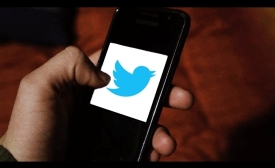social media
A decade ago, NATO’s Public Diplomacy Division and its stakeholders stared blankly at the skyrocketing evolution of social media. Facebook, LinkedIn, Flickr, Twitter—just to name a few—were new phenomena which at first seemed to attract young people, but had no place in a serious international organization that dealt with high-level political topics, let alone security and defense.

The organization has come a long way in terms of digital communications strategy.
Taliban fighters posed for the camera, their shawls and bandannas covering their identities but not their jubilation, as they captured the main roundabout in the northern Afghan city of Kunduz early this month in what could have been called “operation hoist the flag and pull out a smartphone.” [...] In a country where social media use is becoming more and more vital, the Taliban are making sure to flood the information channels with their message.
The tour, marked as the teaser of the " China-Russia Internet Media Forum" that will be heldin Tianhe district on Saturday, included visits to some of the leading internet and innovativecompanies in the district. More than twenty Russian press savvies and media entrepreneurswith their Chinese counterparts attended the tour.
A new report by West Point’s Combating Terrorism Center, “Communication Breakdown: Unraveling the Islamic State’s Media Efforts,” describes in detail the impact of military action on ISIS’ capacity to wage ideological warfare. Promising the coming of the caliphate and portraying the Islamic State as utopian reality about to happen has become all but impossible.

This research project studied how Twitter is being used in the Gulf Cooperation Council (GCC) countries as a form of digital diplomacy.







